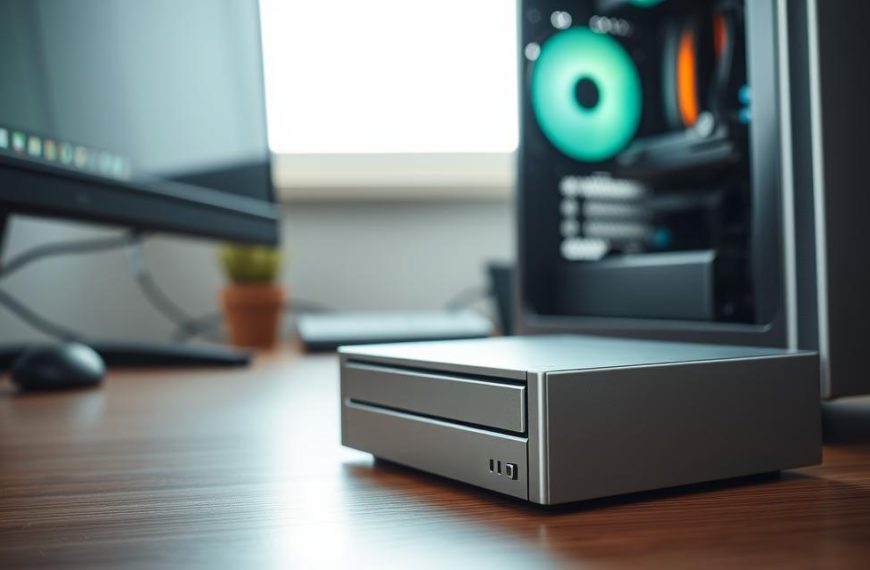Investing in crypto has become increasingly accessible in the United States, thanks to a variety of reliable platforms. These platforms offer unique features tailored to meet the needs of both beginners and experienced traders.
For instance, PayPal stands out with its robust fraud protection, covering up to $50,000 in reimbursements. It also allows users to spend their cryptocurrency at over 30 million merchants, with automatic conversion to USD.
Binance.US, on the other hand, is a top choice for staking, offering over 170 trading pairs. Coins supports more than 160 digital assets, including popular altcoins like BTC, ETH, and SOL, making it ideal for diversifying your portfolio.
These platforms ensure security and convenience, making them excellent options for anyone looking to explore the world of digital assets.
Introduction to Buying Cryptocurrency in the USA
Cryptocurrency has emerged as a revolutionary form of currency in the modern financial landscape. Built on blockchain technology, it enables decentralized transactions without the need for intermediaries. This innovation has reshaped how people view and use money globally.
The market for digital assets operates 24/7, offering continuous trading opportunities. Unlike traditional financial markets, which have fixed hours, crypto trading allows investors to act on global events in real-time. This flexibility is one of its most appealing features.
What is Cryptocurrency?
Cryptocurrency is a borderless digital currency powered by blockchain technology. This decentralized ledger ensures transparency and security in every transaction. PayPal, for instance, defines it as a seamless way to transfer value across borders without traditional banking systems.
Why Buy Cryptocurrency in the USA?
The U.S. offers a robust regulatory environment for crypto investments. Platforms like PayPal have integrated crypto payments into familiar checkout flows, making it easier for users to spend their digital assets. Additionally, the 24/7 trading environment allows for dollar-cost averaging, reducing the impact of volatility.
U.S.-based investors also benefit from tax advantages. Properly reporting crypto gains and losses can lead to significant savings. These factors make the U.S. an attractive hub for cryptocurrency enthusiasts.
| Feature | Traditional Markets | Cryptocurrency Markets |
|---|---|---|
| Trading Hours | Fixed (e.g., 9 AM – 5 PM) | 24/7 |
| Volatility | Moderate | High |
| Transaction Speed | Days | Minutes |
Top Platforms to Buy Cryptocurrency in the USA
Exploring digital assets in the U.S. has never been easier with top-tier platforms. These platforms cater to diverse needs, from beginners to seasoned traders. Let’s dive into the standout features of Coins, PayPal, and Binance.US.
Coins: A Wide Range of Cryptocurrencies
Coins stands out for its extensive selection of digital assets. It supports over 160 cryptocurrencies, including popular altcoins like DOGE, SHIB, and PEPE. This diversity makes it ideal for investors looking to diversify their portfolios.
Additionally, Coins offers educational resources for new users. These tools help beginners understand the crypto market and make informed decisions. Whether you’re trading or learning, Coins provides a comprehensive experience.
PayPal: Simplified Crypto Transactions
PayPal has integrated cryptocurrencies into its platform, making transactions seamless. Users can transfer crypto between personal accounts with ease. This feature is perfect for those who value convenience.
PayPal also supports W-9 integration for instant payments. However, it limits users to five digital assets. Despite this, its robust fraud protection and merchant acceptance make it a trusted choice.
Binance.US: Trusted and Secure Trading
Binance.US is known for its institutional-grade security. It uses U.S.-based cold storage to protect user funds. This ensures that your crypto assets are safe from potential threats.
The platform also offers free BTC trading and advanced tools for experienced traders. Its mobile app provides a seamless trading experience, making it a top choice for active investors.
| Platform | Key Features | Supported Assets |
|---|---|---|
| Coins | 160+ cryptocurrencies, educational resources | DOGE, SHIB, PEPE |
| PayPal | W-9 integration, fraud protection | 5 assets |
| Binance.US | Cold storage, free BTC trading | 170+ trading pairs |
Key Features to Consider When Choosing a Platform
Selecting the right platform for digital assets requires careful evaluation. Not all platforms offer the same features, and understanding these differences can significantly impact your experience. Here are the key factors to consider.
Supported Cryptocurrencies
The variety of cryptocurrencies supported by a platform is crucial. Some platforms focus on major assets like BTC and ETH, while others offer a wide range of altcoins. For example, Binance.US supports over 170 trading pairs, making it ideal for diversification.
Platforms like PayPal, however, limit users to five digital assets. This restriction may not suit investors looking for broader options. Always check the platform’s asset list before committing.
Fees and Transaction Costs
Understanding fees is essential to avoid unexpected costs. PayPal charges no conversion fees at checkout, making it a cost-effective choice for everyday transactions. Binance.US, on the other hand, offers 0% ACH fees, appealing to frequent traders.
Be aware of hidden spreads. PayPal uses dynamic pricing, while Binance.US provides a transparent fee schedule. Always compare fee structures to find the best fit for your needs.
Security Measures
Security is a top priority when dealing with digital assets. Platforms like Binance.US use U.S.-based cold storage to protect user funds. This ensures your assets are safe from potential threats.
Additionally, evaluate insurance policies. FDIC-protected accounts offer added peace of mind, while non-FDIC platforms may require extra caution. Always verify the platform’s security measures before investing.
- Compare KYC requirements across platforms.
- Check fiat withdrawal limits and processing times.
- Analyze liquidity differences between altcoin-heavy and BTC-focused platforms.
Understanding Fees and Costs
Navigating the world of digital assets involves understanding the costs associated with each transaction. Whether you’re buying, selling, or transferring crypto, fees can significantly impact your overall investment. Here’s a breakdown of the key costs to consider.
Transaction Fees
Transaction fees vary widely across platforms. For example, PayPal charges 0% for checkout conversions, making it a cost-effective option for everyday purchases. However, network gas fees for transfers can add up, especially during periods of high congestion.
Platforms like Binance.US use a maker-taker fee model. Makers pay lower fees for adding liquidity to the market, while takers pay slightly higher rates for removing it. Always compare these structures to minimize costs.
Withdrawal and Deposit Fees
Depositing and withdrawing funds also come with costs. ACH transfers are often free or low-cost, while wire transfers can incur higher amounts. For instance, Binance.US offers 0% ACH fees, but wire transfers may cost up to $15 per transaction.
USD withdrawals can also vary. Some platforms charge a flat fee, while others use a percentage-based model. Be sure to check these details before committing to a platform.
Hidden Costs to Watch Out For
Not all costs are upfront. Spread markups on instant-buy services can inflate prices, and dynamic miner fees during network congestion can catch you off guard. Always calculate the total cost for a $1,000 BTC purchase across platforms to avoid surprises.
- Compare maker-taker fee models on Binance.US.
- Expose spread markups on instant-buy services.
- Warn about dynamic miner fees during network congestion.
Security Measures for Safe Crypto Transactions
Ensuring the safety of your digital assets is a top priority for any investor. With the rise of digital threats, platforms have implemented advanced security measures to protect users. These include two-factor authentication, cold storage, and robust fraud protection policies.
Two-Factor Authentication (2FA)
Two-factor authentication adds an extra layer of security to your account. While SMS-based 2FA is common, authenticator apps like Google Authenticator offer higher protection. They generate time-sensitive codes that are harder to intercept.
Platforms like Binance.US encourage users to enable 2FA to safeguard their accounts. This simple step can prevent unauthorized access and ensure your assets remain secure.
Cold Storage Options
Cold storage keeps digital assets offline, away from potential cyber threats. Binance.US uses multi-party computation (MPC) custody, a cutting-edge method for securing funds. This approach splits private keys into multiple parts, reducing the risk of theft.
For added peace of mind, consider using a hardware wallet. These devices store your private keys offline, making them immune to online attacks.
Fraud Protection Policies
PayPal offers $50,000 in unauthorized transfer protection, ensuring users are covered in case of fraud. However, it’s important to note that this policy doesn’t cover losses due to cryptocurrency volatility.
Additionally, FDIC insurance protects USD balances on some platforms. While this doesn’t apply to digital assets, it adds an extra layer of security for fiat holdings.
- Compare SMS vs. authenticator app 2FA for better protection.
- Explore Binance.US’s MPC cold storage for advanced security.
- Understand PayPal’s purchase protection and its limitations.
- Verify FDIC insurance coverage for USD balances.
- Evaluate exchange security audits before committing.
How to Set Up Your Crypto Account
Setting up a crypto account is a straightforward process that ensures secure transactions. Whether you’re a beginner or an experienced trader, following the right steps can make the process smooth and efficient.
Account Registration Process
Creating an account on platforms like Binance.US takes just a few minutes. Users can sign up with an email address and set up a password. The platform also offers instant ACH linking, allowing you to connect your bank account quickly.
PayPal, on the other hand, requires users to complete a W-9 tax form before using crypto as a payment method. This ensures compliance with U.S. regulations and adds an extra layer of security.
Verification and KYC Requirements
Verification is a crucial step in setting up your account. Most platforms require Know Your Customer (KYC) documentation, such as a government-issued ID and proof of address. Binance.US typically processes verification within a short time frame, making it user-friendly.
PayPal’s verification process includes Social Security number confirmation. This step is essential for enabling crypto transfers between personal accounts. Always ensure your documents are clear and up-to-date to avoid delays.
Linking Payment Methods
Linking your payment method is the final step. Binance.US supports instant ACH linking, which is secure and efficient. PayPal integrates with Plaid for bank connections, ensuring a seamless and safe process.
If you encounter issues, such as bank rejections, double-check your account details. Some platforms offer customer support to help troubleshoot these problems. For more information on PayPal’s crypto features, visit their official page.
Buying and Selling Cryptocurrency: Step-by-Step Guide
Mastering the process of buying and selling digital assets can boost your trading confidence. Whether you’re a beginner or seasoned trader, following structured steps ensures smooth transactions. Below, we break down the essentials.
How to Buy Crypto
Platforms like PayPal simplify purchases with 1-tap checkout conversions. Select your preferred digital asset, enter the amount, and confirm. Funds are deducted automatically from linked payment methods.
For advanced traders, Binance.US offers limit orders. Set your desired price, and the platform executes the trade when the market reaches it. This method provides better control over entry points.
How to Sell Crypto
PayPal’s “sell crypto” flow integrates seamlessly with merchant payments. Convert digital assets to USD instantly, or hold them for future transactions. Binance.US supports market orders for immediate sales at current prices.
“Always calculate capital gains tax when converting crypto to USD. Short-term holdings (under 1 year) are taxed as ordinary income.”
Converting Crypto to USD
ACH withdrawals typically settle within 1-3 business days. Compare instant sell prices with exchange rates to maximize returns. Below is a quick comparison of order types:
| Order Type | Execution Speed | Best For |
|---|---|---|
| Market Order | Instant | Urgent trades |
| Limit Order | Price-dependent | Strategic buying/selling |
- Track ACH settlement windows to plan withdrawals.
- Review tax implications before large conversions.
- Use limit orders to avoid slippage during volatility.
Using Crypto Wallets for Storage and Management
Managing your digital assets effectively starts with choosing the right crypto wallet. Wallets are essential tools for securely storing and transferring your cryptocurrencies. They come in various forms, each offering unique features and levels of security.
Types of Crypto Wallets
Crypto wallets fall into two main categories: custodial and non-custodial. Custodial wallets, like those on Binance.US, are managed by third parties. They offer convenience but come with risks, as you don’t control the private keys.
Non-custodial wallets, such as MetaMask, give you full control over your wallet. This includes managing private keys and seed phrases. Hardware wallets, like Ledger, provide offline storage for added security.
How to Transfer Crypto to a Wallet
Transferring crypto to a wallet is straightforward. For example, to move ETH from Binance.US to MetaMask, copy your MetaMask address, paste it into Binance.US, and confirm the transfer. PayPal also supports transfers to Web3 wallets, making it easy to manage your assets.
Always double-check wallet addresses to avoid mistakes. PayPal’s whitelisting feature ensures only trusted addresses are used for transfers.
Best Practices for Wallet Security
Securing your wallet is crucial. Store your seed phrase offline in a safe place. Never share it online or with anyone. Use hardware wallets for long-term storage, as they are immune to online threats.
- Enable two-factor authentication for added protection.
- Regularly update your wallet software to patch vulnerabilities.
- Use strong, unique passwords for all wallet accounts.
Trading Cryptocurrency: Tips for Beginners
Entering the world of crypto trading can be both exciting and challenging for beginners. The market operates 24/7, offering endless opportunities but also requiring careful strategy. To succeed, it’s essential to understand key concepts and avoid common pitfalls.
Understanding Market Volatility
Crypto markets are known for their high volatility. Prices can swing dramatically in a short time, creating both risks and rewards. For example, historical BTC drawdowns have been more severe compared to traditional assets like stocks.
PayPal warns users about these risks, emphasizing the importance of staying informed. Beginners should start small and avoid investing more than they can afford to lose.
Basic Trading Strategies
One effective strategy is dollar-cost averaging. This involves making recurring buys on platforms like Binance.US, regardless of price fluctuations. It reduces the impact of volatility and helps build a portfolio over time.
Another approach is setting stop-loss orders. These automatically sell your assets if prices drop below a certain level, protecting you from significant losses.
Common Mistakes to Avoid
Chasing meme coins like BONK or WIF can lead to quick losses. These assets often lack long-term value and are driven by hype. Emotional trading during FOMO (fear of missing out) events is another common mistake.
- Analyze historical data before making decisions.
- Stick to a plan and avoid impulsive trades.
- Diversify your portfolio to minimize risks.
Tax Implications of Buying and Selling Crypto
Understanding the tax implications of digital assets is crucial for any investor. The IRS treats cryptocurrencies as property, meaning every transaction can trigger a taxable event. Proper reporting ensures compliance and avoids penalties.
Reporting Crypto Gains and Losses
When you sell or exchange digital assets, you must report the gains or losses on your tax return. Platforms like PayPal issue 1099 forms for sales, simplifying the process. Binance.US provides transaction history exports, making it easier to track your activity.
Calculating your cost basis is essential. This is the original value of the asset, used to determine your gain or loss. Methods like FIFO (First In, First Out) or specific identification can impact your tax liability.
Understanding 1099 Forms
PayPal issues 1099 forms for crypto sales exceeding $600. These forms detail your transactions and are shared with the IRS. Always review them for accuracy before filing your taxes.
If you use multiple platforms, consolidate your transaction reports. This ensures you don’t miss any taxable events. Tools like crypto tax software can automate this process.
Tax Planning Tips
Effective tax planning can save you money. Consider tax-loss harvesting, where you sell assets at a loss to offset gains. Unlike stocks, the wash sale rule doesn’t apply to crypto, offering more flexibility.
Dollar-cost averaging can also reduce your tax burden. By spreading out purchases, you minimize the impact of price fluctuations. Always consult a tax professional for personalized advice.
- Export PayPal crypto transaction reports for accurate records.
- Use FIFO or specific identification to calculate cost basis.
- Leverage tax-loss harvesting to offset gains.
- Consult a tax professional for complex situations.
Customer Support and Resources
Reliable customer support is a cornerstone of any successful crypto platform. Whether you’re a beginner or an experienced trader, having access to timely assistance can make a significant difference. Platforms like Binance.US and PayPal offer robust resources to address user questions and concerns.
Accessing Help Centers
PayPal provides a 24/7 help center, ensuring users can find answers at any time. Binance.US also offers a comprehensive FAQ section, covering topics from account setup to transaction troubleshooting. These resources are designed to empower customers with self-service options.
Customer Reviews and Feedback
User feedback is a valuable indicator of a platform’s reliability. Binance.US receives praise for its responsive customer service, while PayPal’s Trustpilot ratings highlight its ease of use. Analyzing reviews can help you choose a platform that aligns with your needs.
Community Forums and Support Groups
Engaging with community forums can provide additional insights. Reddit communities for platforms like Binance.US and PayPal are active spaces for users to share tips and resolve issues. These forums often feature verified resolution paths for common problems, such as locked accounts.
Educational content libraries are another valuable resource. Platforms like Binance.US offer tutorials and guides to help users navigate the crypto landscape. These tools are especially useful for beginners looking to build their knowledge.
- Compare response times: live chat vs. email support.
- Explore Reddit communities for peer-to-peer assistance.
- Utilize educational content to enhance your trading skills.
Conclusion: Where Can I Buy Cryptocurrency in the USA?
Choosing the right place to engage with digital assets is crucial for a smooth experience. Platforms like Coins excel for altcoin enthusiasts, offering a wide range of assets. PayPal stands out for seamless spending, while Binance.US is ideal for active trading.
Security remains a top priority. Always verify platform measures like cold storage and two-factor authentication. Compliance with tax regulations is equally important. Proper reporting ensures you avoid penalties and maximize benefits.
Start with small investments to understand the market dynamics. Diversifying your portfolio over time can help manage risks. For more options, explore trusted platforms like Bitcoin.com to expand your crypto journey.










